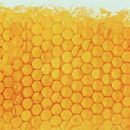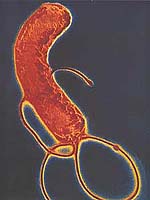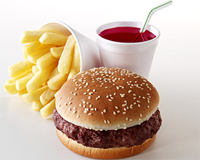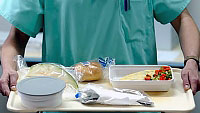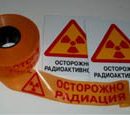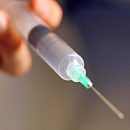Ulcerative disease is indoor to consider infectious disease - after all, 85-90% of people suffering from the ulcer of the stomach or 12th intestine are infected with microorganism Helicobacter Pilori. It is this cunning bacterium that contributes to the transition of ulcers into cancer, and the outcome of the disease largely depends on the timely elimination of infection.
Content
- Aggressive microbe
- Prepare the soil
- Neutralize enemy
Panish disease - a big problem for health care, since the disease is widespread (occurs approximately 10% of the population), is chronic, often recurs and is fraught with the development of complications, which leads to large expenditures for treatment and maintenance of remission.
The essence of the disease is to ulcerate the wall of the stomach or a 12-rosewind, due to the equilibrium disorder between "aggressive" and "protective" factors. The leading role in strengthening aggression factors belongs to the bacteria Helicobacter Pilori.
It has been established that this bacterium is infected on average 85-90% of persons suffering from ulcerative disease. In 1994, experts of the World Health Organization (WHO) Helicobacter Pillori was listed in the class, so-called reliable carcinogens. After all, the risk of cancer (adenocarcinoma) of the stomach in infected patients increases by 3 times.
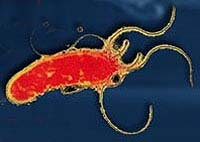 Helicobacter Pylori (Helicobacter Pylori) - spiral gram-negative bacteria that were found on the gastric mucosa for more than half a century ago, but they did not cause much interest before the early 1980s., When the method of cultivation of organisms from the mucosal material was developed.
Helicobacter Pylori (Helicobacter Pylori) - spiral gram-negative bacteria that were found on the gastric mucosa for more than half a century ago, but they did not cause much interest before the early 1980s., When the method of cultivation of organisms from the mucosal material was developed.
In 1983. Australian doctor Barry Marshall discovered that Helicobacter Pilori is almost always present in the stomach of patients suffering from chronic gastritis or ulcers. Bacteria, by themselves, the ulcers of the stomach or duodenum do not cause, however, provoke inflammatory processes in the stomach and weaken the natural protection of the mucous membrane on the effects of the acidic medium of the stomach; In this case, the Helicobacter stimulates the hypersection of hydrochloric acid, affecting its regulation mechanisms. If the current therapy leads to a decrease in the acidity of the stomach, the ulcer can delay, but after the cessation of treatment there is a possibility of its re-occurrence. Long-term observations have shown that in patients who did not receive antimicrobial therapy, the ulcer recurns in 2 years 100%, and in treated patients there is re-(usually due to re-infection) only at 5-10%.
Source Source Helicobacter Pilori - Infected Man, Cats, Pigs, Cattle and Monkeys (Macaque-Rus). More often, infection occurs through water contaminated by feces and food (for example, vegetables, with watering of which was used contaminated water). The object of transmission of the infectious start can be contaminated hands, saliva, drops of saliva or wet cough. There are data on the transfer of infection through gastroscopes and gastric probes.
Studies conducted by doctors from the United States showed that Helicobacter Pilori can be considered a family infection, and if the family identified the carrier of these bacteria, the probability of other family members to be infected is 95%.
For accurate diagnosis of peptic disease and helicobacter infection, it is necessary to conduct an endoscopic study of the stomach and a 12-rosewoman, during which the biopsy of the mucous membrane of the stomach wall is performed and the presence of a bacterium is confirmed or rejected. There are also non-invasive methods for detecting Helicobacter infection - on the analysis of blood or exhaled air - but in practice they are not always available.
There are antisecretory drugs that ensure not only healing of ulcers, but also create optimal conditions for the destruction of bacteria. Among them should be allocated the drug of the new generation - Ezomeprazole.
For the eradication, the Helicobacter Pylori Ezomeprazole is prescribed 20 mg 2 times a day at 8 and 20 hours for 7 days, in combination with antibacterial drugs, selected by the gastroenterologist. For the treatment of exacerbation of the ulcerative disease of the 12-robes of a fairly seven-day course of therapy without subsequent supportive therapy, which is economically justified.
Today, antimicrobial drugs have been introduced worldwide into the treatment chart of peptic ulcer. They are used together with proven anti-seed agents. The destruction (eradication) of the Helicobacter using an adequate combination of drugs provides an unrecognizable flow of not only ulcerative disease, but also the regression of chronic gastroduodenitis, eliminates the patient from possible complications of the disease, probably also measures the prevention of gastric cancer.
The list of drugs with antibiobacter activity WHO experts include Clarithromycin and Amoxicillin antibiotics, as well as metronidazole (trichopol).
Despite the emergence of new highly efficient drugs, the success of the therapy of ulcerative disease depends a considerable extent on the patient's essential fulfillment of the prescriptions and recommendations of the attending physician (including the power and diet regime, the abandonment of smoking and T.D.).

